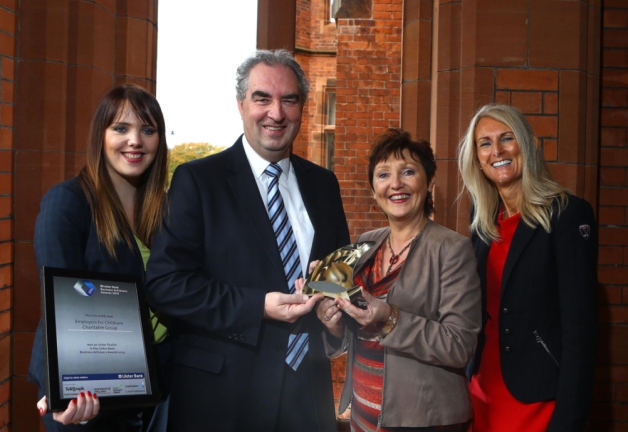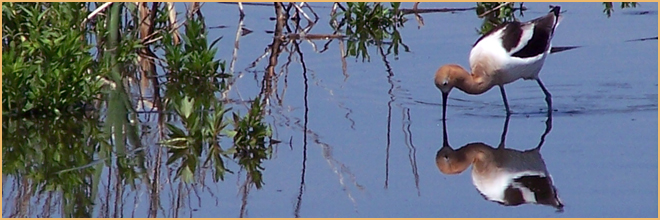Government Grants
Business Grants
Home Owner Programs
Federal Programs
About Us
Green Infrastructure Design for Mat-Su Borough
The US Fish and Wildlife Service, Headquarters Region 7 intends to award a single source Cooperative Agreement to Mat-Su BoroughPlanning and Land Use Department.
This notice is not a request for proposals and the Government does not intend to accept proposals.
Award will be made 10 days after this notice.
This project will identify and recruit stakeholders to participate in developing the natural resources map for a network design and implementation plan for the Green Infrastructure (GI) Plan for the MSB project area.
The project also will include development of a preliminary natural resources map for use with stakeholder groups.
The natural resources map will include, but not be limited to, the MSB core area between Wasilla and Palmer, and may be ultimately used to map more than one Green Infrastructure network design.
1) Define the Project Area - Work with the Friends of Mat-Su to examine the Matanuska Susitna Borough, including the MSB core area and establish a base natural resources map product.
A. Research, obtain, rectify and compile existing data layers into appropriate and compatible GIS layers, resulting in a base map product to include uplands and wetlands and associated vegetation classifications, waterbodies, roads, anadromous streams, and other layers necessary in identification of natural resources and recreation lands.
Outcome:
preliminary GIS compilation of base maps available late September or October 200 8.
B. Make these base natural resources map products available to the natural resource experts planning group via appropriate print and electronic media and tools
C. Convene a natural resource experts planning group to identify priority areas of ecological significance to fish and wildlife within the GI project area.
Functions of the group will be to:
a. identify areas of ecological significance (?core areas? )
b. identify the ecological ?hubs? within the core areas
c. delineate the ecological connectivity (?links?)
d. draft at least one preliminary ecological network design
D. Convert preliminary ecological network design into a GIS layer.
Outcome:
preliminary ecological network design available as a GIS layer with associated metadata available January 200 9.
2) Identify Members for Steering Committee? We will recruit members from local community and land use and development stakeholder groups and significant agencies to participate in organizing the forums to develop the Green Infrastructure network design.
Outcome:
1 to 2 representatives from each of 8 to 10 stakeholder organizations recruited to participate in the project.
We have already established a steering committee (FWS, FOMS, MSB, GLT, NPS) ? Maureen notes that we would like to see someone from development community involved in steering committee so that they have buy-in from the beginning.
3) Steering Committee Meeting(s) ?The steering committee will meet to discuss organization, advertisement, additional recruitment and implementation of the Green Infrastructure network design forums Outcomes:
Steering Committee meeting (s) held fall/winter 200 8. Materials and agenda for network design forums and charette process developed.
4) Network Design Forums and Charettes ? Stakeholders participate in network design forums, using the charette process, to draft a Green Infrastructure network design.
They will utilize as much of the preliminary design described in (1) above as is then available.
Outcome:
Draft Green Infrastructure network design for the Matanuska Susitna Borough Core Area completed by spring 200 9.
5) Evaluation ? Steering Committee will review draft natural resources map (from step#1 above) and green infrastructure network design results (from step #4) and determine next steps for integration and completion of final design.
Outcome:
Summary analysis of Green Infrastructure network design completed by August 1 200 9.
This notice is not a request for proposals and the Government does not intend to accept proposals.
Award will be made 10 days after this notice.
This project will identify and recruit stakeholders to participate in developing the natural resources map for a network design and implementation plan for the Green Infrastructure (GI) Plan for the MSB project area.
The project also will include development of a preliminary natural resources map for use with stakeholder groups.
The natural resources map will include, but not be limited to, the MSB core area between Wasilla and Palmer, and may be ultimately used to map more than one Green Infrastructure network design.
1) Define the Project Area - Work with the Friends of Mat-Su to examine the Matanuska Susitna Borough, including the MSB core area and establish a base natural resources map product.
A. Research, obtain, rectify and compile existing data layers into appropriate and compatible GIS layers, resulting in a base map product to include uplands and wetlands and associated vegetation classifications, waterbodies, roads, anadromous streams, and other layers necessary in identification of natural resources and recreation lands.
Outcome:
preliminary GIS compilation of base maps available late September or October 200 8.
B. Make these base natural resources map products available to the natural resource experts planning group via appropriate print and electronic media and tools
C. Convene a natural resource experts planning group to identify priority areas of ecological significance to fish and wildlife within the GI project area.
Functions of the group will be to:
a. identify areas of ecological significance (?core areas? )
b. identify the ecological ?hubs? within the core areas
c. delineate the ecological connectivity (?links?)
d. draft at least one preliminary ecological network design
D. Convert preliminary ecological network design into a GIS layer.
Outcome:
preliminary ecological network design available as a GIS layer with associated metadata available January 200 9.
2) Identify Members for Steering Committee? We will recruit members from local community and land use and development stakeholder groups and significant agencies to participate in organizing the forums to develop the Green Infrastructure network design.
Outcome:
1 to 2 representatives from each of 8 to 10 stakeholder organizations recruited to participate in the project.
We have already established a steering committee (FWS, FOMS, MSB, GLT, NPS) ? Maureen notes that we would like to see someone from development community involved in steering committee so that they have buy-in from the beginning.
3) Steering Committee Meeting(s) ?The steering committee will meet to discuss organization, advertisement, additional recruitment and implementation of the Green Infrastructure network design forums Outcomes:
Steering Committee meeting (s) held fall/winter 200 8. Materials and agenda for network design forums and charette process developed.
4) Network Design Forums and Charettes ? Stakeholders participate in network design forums, using the charette process, to draft a Green Infrastructure network design.
They will utilize as much of the preliminary design described in (1) above as is then available.
Outcome:
Draft Green Infrastructure network design for the Matanuska Susitna Borough Core Area completed by spring 200 9.
5) Evaluation ? Steering Committee will review draft natural resources map (from step#1 above) and green infrastructure network design results (from step #4) and determine next steps for integration and completion of final design.
Outcome:
Summary analysis of Green Infrastructure network design completed by August 1 200 9.
Relevant Nonprofit Program Categories
Obtain Full Opportunity Text:
Not Available
Additional Information of Eligibility:
Not Available
Full Opportunity Web Address:
Contact:
Richard Primmer Contract Specialist Phone 907-786-3611
Agency Email Description:
Contact
Agency Email:
rich_primmer@fws.gov
Date Posted:
2008-08-08
Application Due Date:
2008-08-22
Archive Date:
2008-09-21
Social Entrepreneurship
Spotlight
Childcare Charitable Group Named Top Social Enterprise

Employers For Childcare Charitable Group (EFCG), a Lisburn-based charity, has been crowned top Social Enterprise at the Ulster Final of 2014’s Ulster Bank Business Achievers Awards. EFCG seeks to “make it easier for parents with dependent children to get into work and to stay in work.”

